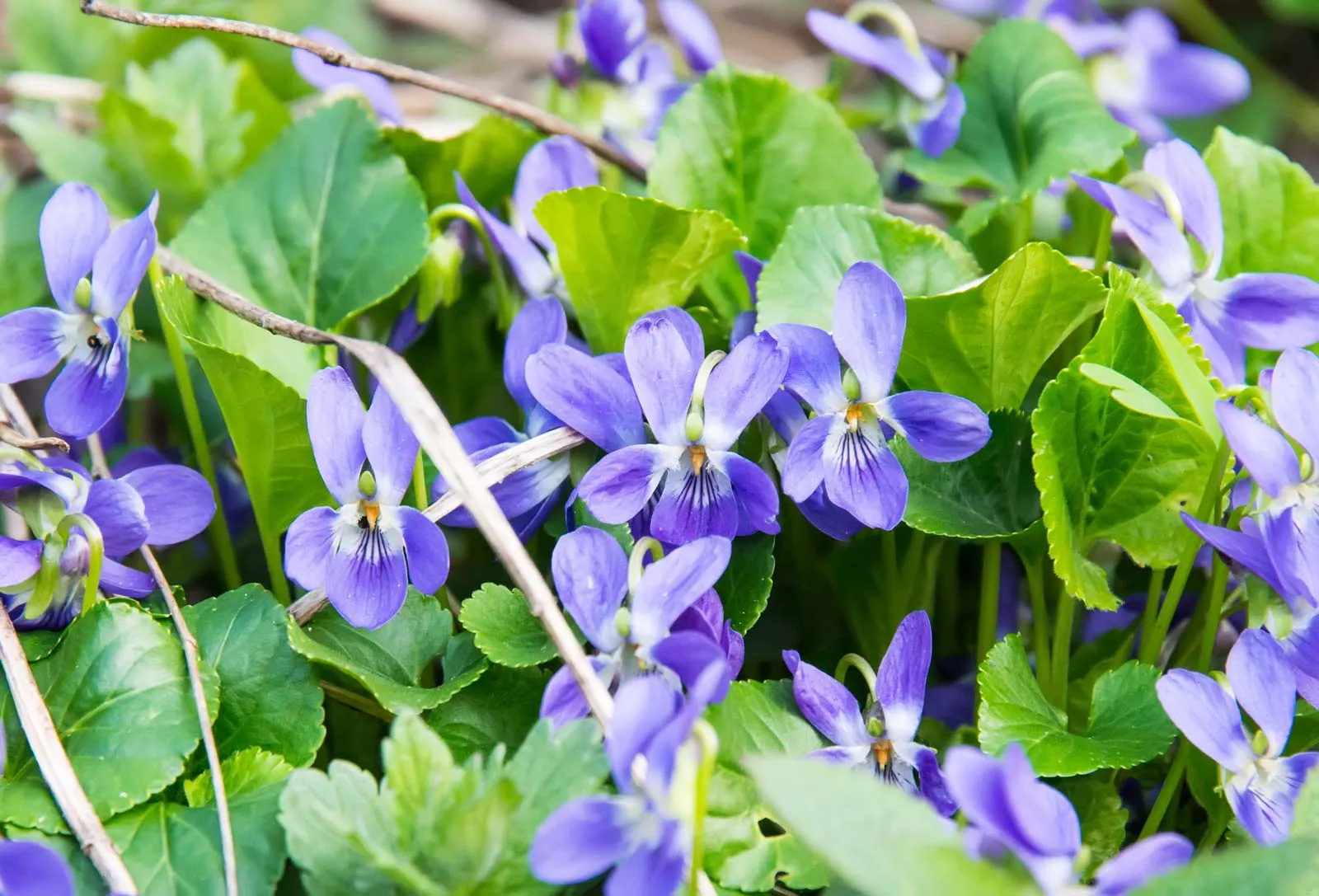
Viola, often referred to as a charming and versatile plant, has captivated gardeners and nature enthusiasts for centuries. Known for its vibrant colors and delicate blooms, this plant belongs to the Violaceae family and is a close relative of pansies and violets. Whether grown in gardens, hanging baskets, or containers, the Viola’s beauty and charm are undeniable. But there’s much more to Viola than meets the eye. In this article, we will explore 10 fascinating facts about Viola that will deepen your appreciation for this remarkable plant. From its long history in herbal medicine to its surprising ability to attract bees and butterflies, Viola is truly a plant worth getting to know. So, let’s dive into the enchanting world of Viola and uncover the secrets behind its allure.
Key Takeaways:
- Violas are versatile, low-maintenance flowers with a rich history and wide range of colors. They symbolize spring, are edible, and have medicinal uses, making them a captivating addition to any garden.
- With their cool-season blooming, violas add vibrant colors to gardens when other flowers may not thrive. They are popular in cottage gardens, have edible varieties, and are a symbol of spring and new beginnings.
Beautiful and Versatile
Viola is not only a stunning flowering plant, but it is also incredibly versatile in terms of its uses. Whether you want to add a pop of color to your garden or create a stunning floral arrangement, violas can do it all.
Rich History
Violas have a rich history that dates back centuries. They have been cultivated and appreciated for their beauty and fragrance since ancient times. From being used in herbal remedies to symbolizing love and friendship, these flowers have played a significant role in various cultures.
Wide Range of Colors
One of the most captivating aspects of violas is the wide range of colors they come in. From vibrant reds and oranges to delicate pinks and purples, there is a viola to suit every aesthetic preference.
Cool-Season Bloomers
Unlike many other flowers, violas bloom best during the cooler seasons, such as fall and spring. This makes them an excellent choice for adding color to your garden when other flowers might not be thriving.
Edible Delights
Did you know that violas are not just a pretty face? Many varieties of violas are edible and can be used to garnish salads, desserts, and even cocktails. Their delicate, mild flavor adds a touch of elegance to any culinary creation.
Symbol of Spring
In many cultures, violas are seen as a symbol of spring and new beginnings. Their vibrant hues and delicate petals evoke feelings of rejuvenation and hope, making them a popular choice for springtime celebrations and decorations.
Low Maintenance Beauties
If you’re looking for a low-maintenance flower, violas are the perfect choice. They are incredibly hardy and can withstand varying weather conditions. With minimal care, these beauties will continue to bloom and brighten up your garden.
Popular in Cottage Gardens
Violas are a staple in cottage gardens with their old-world charm and delicate blooms. They perfectly complement the rustic and whimsical aesthetic of these classic garden styles.
Medicinal Uses
In traditional medicine, certain species of violas are known for their medicinal properties. They have been used to treat a range of ailments, including coughs, colds, and skin conditions.
Cultivated Varieties
Over the years, numerous cultivated varieties of violas have been developed, offering a wide selection for gardeners to choose from. These cultivated varieties often boast larger flowers, unique color combinations, and improved overall performance.
Conclusion
In conclusion, the Viola is a fascinating and often overlooked instrument with a rich history and unique qualities. From its deep, warm sound to its versatile range, the Viola has captivated musicians and music enthusiasts for centuries. Understanding its origins, famous violists, and different playing techniques can enhance one’s appreciation for this beautiful instrument. Whether you’re a musician or simply a lover of music, exploring the world of Viola can be a rewarding journey. So, take a moment to dive into the enchanting world of the Viola and discover the magic it holds.
FAQs
Q: How is the Viola different from the violin?
A: The Viola is slightly larger than the violin and produces a deeper, richer sound. It is played with a bow and has four strings like the violin, but the strings of the Viola are tuned a perfect fifth lower than the violin.
Q: Who are some famous violists?
A: Some famous violists include William Primrose, Lionel Tertis, Yuri Bashmet, and Kim Kashkashian.
Q: What are some common playing techniques used in Viola music?
A: Common playing techniques in Viola music include vibrato, double stops, harmonics, and pizzicato.
Q: Can the Viola be used as a solo instrument or is it mainly used in ensembles?
A: While the Viola is often associated with orchestras and chamber music ensembles, it can also be used as a solo instrument. There is a vast repertoire of solo Viola music that showcases its unique qualities and expressive capabilities.
Q: Can the Viola be played by beginners?
A: Yes, the Viola can be played by beginners. However, it is recommended to start with a smaller-sized viola and gradually progress to a full-sized instrument as the player gains experience and strength.
Was this page helpful?
Our commitment to delivering trustworthy and engaging content is at the heart of what we do. Each fact on our site is contributed by real users like you, bringing a wealth of diverse insights and information. To ensure the highest standards of accuracy and reliability, our dedicated editors meticulously review each submission. This process guarantees that the facts we share are not only fascinating but also credible. Trust in our commitment to quality and authenticity as you explore and learn with us.
